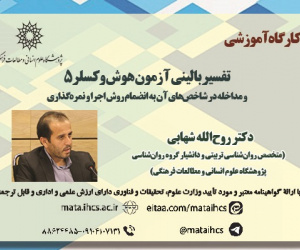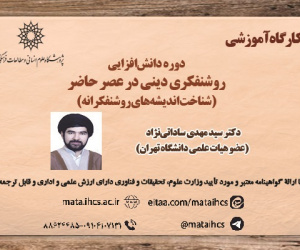تبیین وضعیت زیست پذیری کلان شهر تهران در دوران پساکرونا با رویکرد آینده پژوهی (مقاله علمی وزارت علوم)
درجه علمی: نشریه علمی (وزارت علوم)
آرشیو
چکیده
هدف: در این پژوهش، ضمن تبیین وضعیت آینده پژوهی، زیست پذیری کلان شهر تهران، جهت تعیین وضعیت های محتمل آینده، عوامل کلیدی و ارتباطات بین آن ها تجزیه و تحلیل و رتبه بندی شدند. روش: پژوهش حاضر به لحاظ هدف، کاربردی و از نظر روش شناختی، توصیفی – تحلیلی است. در بخش نخست، با مرور مبانی و استخراج مهم ترین عوامل کلیدی، حکمروایی سیل با استفاده از تکنیک دلفی و نظرخواهی از 30 کارشناس، شاخص های اجماع و قطعیت، اولویت و اهمیت به ارزیابی عوامل پرداخته شد. با تعیین عوامل کلیدی و پارامترهای وردی در مجموع 51 پیشران کلیدی، جهت ورد به نرم افزار Micmac آماده شدند در بخش نهایی و ارائه سناریوها از تحلیل متقاطع به کمک نرم افزارScenario Wizard استفاده شد. یافته ها: از 2550 ارزش محاسبه شده در ماتریس اولیه اثرات متقاطع، 826 مورد دارای تأثیرگذاری زیاد، 1058 مورد دارای تأثیرگذاری متوسط، 666 مورد دارای تأثیرگذاری کم و 51 مورد بی تاتیر ارزیابی شده اند. ارزیابی وضعیت اثرگذاری و اثرپذیری عوامل کلیدی نشان می دهد که از بین 6 عامل اصلی، محیط شهری (S) و خدمات و زیرساخت های شهری مسکن (S)، اثرگذارترین ابعاد بر روند تحولات زیستی کلان شهر تهران بوده اند. نتیجه گیری: از 14 پیشران کلیدی و مهم متغیرهای آلودگی هوا (U1)، وجود حیوانات موذی (U3)، سر زندگی فضاهای عمومی (U6)، تبادل نظر مدیران شهر در تصمیم گیری های مربوط به مسائل و بحران ها (M4)، آگاهی لازم شهروندان برای مشارکت در تصمیم سازی ها و تصمیم گیری ها در زمان بروز بحران (M5)، به عنوان متغیرهای دو وجهی و تاثیرگذار، دارای بیشترین اهمیت بوده اند. همچنین از مجموع 259 وضعیت حاکم بر صفحه سناریو، تعداد 155 حالت و 52.45 درصد وضعیت بحرانی، تعداد 85 حالت و 28.95 درصد در حالت مطلوب و تعداد 55 حالت و 18.60 درصد وضعیت ایستا را نشان می دهد.Explaining the Livability of Tehran Metropolis in the Post-Corona Era Using Futuristic Approach
Purpose: In this study, while explaining the future status of the livability in the metropolis of Tehran, in order to determine the possible future situations, key factors and the relationships between them were analyzed and ranked.
Method: The present study is applied in terms of purpose and descriptive-analytical in terms of methodology. In the first part, by reviewing the basics and extracting the most important key factors of flood governance, using the Delphi technique and consulting 30 experts, the indicators of consensus and certainty, priority and importance were evaluated. By determining the key factors and word parameters, a total of 51 key drivers for Word were prepared in Micmac software. In the final part and presentation of scenarios, cross-analysis was used using Scenario Wizard software.
Findings: Out of 2550 values calculated in the initial matrix of cross-effects, 826 were highly effective, 1058 were moderately effective, 666 were low-impact and 51 were highly effective. Assessing the impact and effectiveness of key factors shows that among the six main factors, urban environment (S) and urban housing services and infrastructure (S) are the most influential dimensions on the process of biological changes in the metropolis of Tehran.
Conclusion; From the 14 key drivers of air pollution variables (U1), the presence of vermin (U3), the living space of public spaces (U6), the exchange of views of city managers in decisions related to issues and crises (M4), the necessary awareness of citizens to participate in decision-making and decisions in times of crisis (M5), as the two-dimensional and influential variables have been most important. Also, out of 259 states on the scenario page, 155 states and 52.45% show the critical state, 85 states and 28.95% the desired state, and 55 states and 18.60% the static state.







